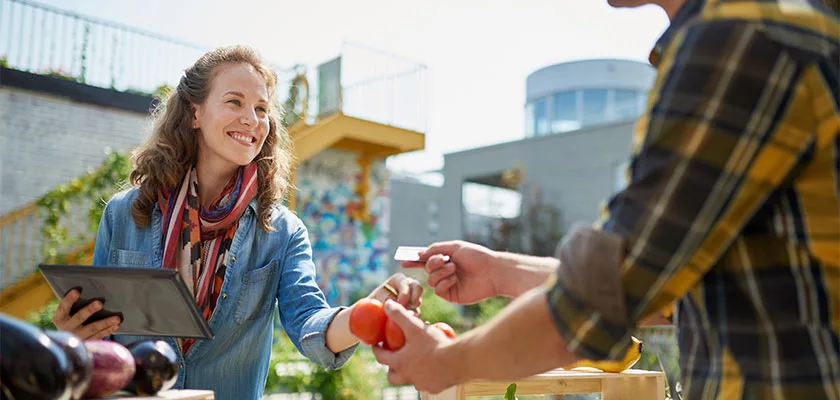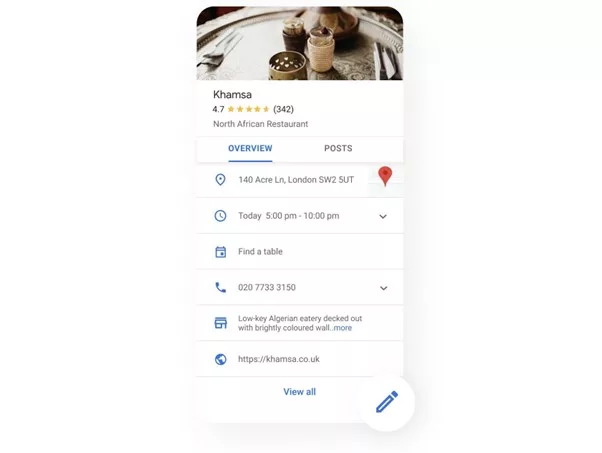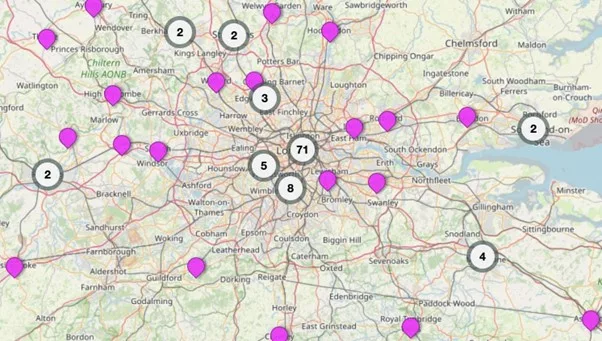
10-Point Checklist for Successful Local SEO
Local SEO is a tough gig but, when 28% of local searches result in a purchase, it’s worth putting in some hard work.
Thankfully, local SEO gets much easier once you’ve got all of the foundations in place and this 10-point checklist will help you do this. Crack all 10 of these key essentials and you’ll be well on your way to enjoying the lofty conversion rates and ROI of a winning local SEO strategy.
What Are the 10 Steps We’re Looking At?
In this article, we’re laying the foundations of a winning local SEO strategy with the following 10 steps:
- Complete your Google Business Profile
- Create listings on business directory websites
- Optimise your website for local SEO
- Optimise for mobile sessions
- Develop a local content strategy
- Target local backlinks
- Build your local profile – online and offline
- Merge the online and offline customer experience
- Capture customer reviews
- Engage with your customers online
By completing all of these, you’ll have everything in place to start getting results and fine-tuning your strategy to maximise ROI.
#1: Complete Your Google Business Profile
The first step in any local SEO strategy is completing your Google Business Profile. This is the HQ of your local search presence. It makes you visible in the local pack of results and other placements – most importantly, in Google Maps.
Your Business Profile also includes all of the information local searchers need to choose you over other businesses.

Crucially, your Business Profile puts key actions at users’ fingertips. They can click through to your website, call you at the push of a button or even browse products and reserve a table, depending on which type of business you are.
To maximise leads and foot traffic from your Business Profile, make sure you complete it 100% and keep it up-to-date with accurate information – eg: opening times.
Also, take full advantage of the opportunity to upload images and videos, showing the best of your business, services, products, etc. Show potential customers why they should choose you over the competition and make it as easy as possible for them to convert, whether this happens online or offline.
#2: Create Listings on Business Directory Websites
Once your Google Business Profile is complete, you’ll want to get your business listed on relevant business directory websites.
Here are some of the top directory sites to get started with:
You don’t need to have listings on every relevant site but each listing expands your reach to a wider audience.
Google and other search engines use the information in directory listings as a signal to verify the legitimacy of your business. So make sure you have at least 3-4 listings on other directory sites and ensure all of your information is 100% accurate and consistent across them all.
#3: Optimise Your Website for Local SEO
Assuming you have a website (you don’t need one for local SEO, but it helps), the next step is to optimise it for local search. First, make sure your name, address and phone number information matches the info in your Google Business Profile and directory listing profiles exactly.
These need to match down to the letter so don’t use “St.” in one place and “Street” in another or have your phone number starting with 020 in since places and +4420 elsewhere.
At the structural level, you want to create location pages for every key area you’re targeting. If you only have one business premise, your homepage can act as the location page for your company but you’ll want to create separate pages for each location if you have multiple premises.
If you want to target local searchers outside of the areas your businesses are located (eg: the whole county), you can create sub-location pages for each business location page. This helps people searching outside of your immediate business location to see your listing, as long as other, more relevant businesses aren’t closer to them (proximity matters in local SEO).
#4: Optimise for Mobile Sessions
As of March 2023, 60.67% of all website traffic comes from mobile and smartphones play an even bigger role in local search. The vast majority of local searches take place on mobile and 88% of people who conduct a local search visit a related store within a week.
If you’re serious about local SEO, you have to prioritise mobile sessions and optimise every touch point for mobile users.
This is especially important if you’re looking to drive website visits from local searches. Mobile-friendliness has been a ranking factor for many years now but Google is taking a stronger interest in UX signals with Core Web Vitals and the page experience update.
Loading times are crucial and Google is also timing the responsiveness of interactive elements and measuring the structural stability of your pages. If interactive elements like buttons take too long to trigger actions or your layout jumps around as elements load, your search rankings are affected.
Google is particularly strict with these signals on mobile because they affect the user experience more on smaller screen sizes.
More importantly, if you’re driving local traffic to your website so they can book a table or buy your products, a poor mobile UX will kill conversions.
#5: Develop a Local Content Strategy
Content marketing is just as important for local SEO as any other search strategy. The difference is, you need to localise your content strategy to include local keywords and cover topics relevant to your area(s).
You don’t need to target local keywords in everything you publish or post unnecessary articles about local topics. Prioritise relevance to your target audience and aim to publish as much localised content as you reasonably can.
You’ll also want to seek out content opportunities on local third-party websites to reach wider audiences, increase citations and earn relevant backlinks.
#6: Target Local Backlinks
The best businesses in any given area are most likely to earn backlinks from reputable sites in the same area: local news websites, events venues, other businesses, etc.

Ideally, you want a mix of high-quality backlinks (irrespective of location) with the best local backlinks you can get.
Obviously, the average quality of local backlinks will probably be lower than other links. This isn’t a problem if you’re getting some of the best links you can from your local area and these should, in theory, be easier to win than the non-local backlinks you’re targeting.
#7: Build Your Local Profile — Online & Offline
The best way to earn local backlinks is to build your local business profile, offline as well as online. Network with local businesses and websites, get in touch with local publishers and get involved with the local community.
Make sure people know you exist and play an active role in the interest of local people’s lives and the local business community.
For example, you could get involved in local events by attending them, sponsoring them or running your own. Being an active member of the local community will build your profile in the area and give people reason to talk about you. It will also make you newsworthy for local publications that are more likely to write about you, reach out for interviews and feature your company in their own content.
#8: Merge the Online & Offline Customer Experience
Earlier, we linked to a stat saying 88% of people who conduct a local search visit a related store within a week. Local search is an omnichannel experience that takes place online and offline – so you need to merge these touchpoints into one experience.
This may start with a local search on mobile, a click-through to your website to make a purchase and picking the product up in-store. It could involve booking a table – either through Google Maps or your website – and the group arriving for their meal.
Alternatively, users may simply perform the local search, compare the options available and pay a visit to your business.
Whatever customer journeys your target audience may take across these online and offline touchpoints, you need to be ready for all of them.
Make it easy for customers to buy your products, reserve them for pickup or select delivery if they prefer. Make it easy to book a table online or call up and make the reservation. And give users all the information they need on your Business Profile to choose you over your local rivals: opening times, service information, amenities, images of your business, etc.
Once customers walk through the door, deliver the best service you can because online reviews are only one step away and they’re visible for everyone to see.
#9: Capture Customer Reviews
According to insights from BrightLocal, 98% of people read online reviews for local businesses.
Thankfully, customers are happier to leave positive reviews when they’re impressed by local businesses than they are with larger or online companies. Use this to your advantage and politely ask customers to leave a review if they’re happy with the service they received.
For any online transactions, send emails to customers asking them to leave reviews.
You don’t need a perfect review score to impress new customers. In fact, research has found people don’t trust perfect review scores. Instead, aim for a strong average score of 4+/5 from a high number of reviews because people are more likely to trust average scores from 100 reviews than 10.
#10: Engage with Your Customers Online
Local SEO gives you a lot of opportunities to engage with customers online. The most obvious place is on review pages (Google Reviews, Trustpilot, etc.) where you can respond to customer feedback. Thank people for positive reviews and address any negative comments or feedback they provide – show that you value their input.
Likewise, you’ll want to deal with negative reviews as quickly and comprehensively as possible. Don’t be afraid of negative feedback. Respond to it with positivity and show others that you excel at customer service, even when the customer might be in the wrong.
You can also interact with customers via your Google Business Profile through posts and Q&As. Publish posts to keep local people informed about new products or services, changes to opening times or anything else going on with your business.
Users can post questions that are visible on your profile and other users can answer these questions for you. So get in there first and respond to questions quickly. Give people the satisfaction of having their questions answered by you and show your enthusiasm to engage with people directly.
You’ll also want to engage with customers on social media. You can include them in your content, run contests and polls or even ask them to create user-generated content for you.
Be authentic and show a genuine interest in the people you want to call customers.
Putting It All Together
Once you’ve covered all 10 of the steps we’ve explored in this checklist, the only thing missing is a robust analytics system to measure the performance of your local SEO strategy and attribute purchases to each step of the customer journey.
This will help you get an accurate picture of how your local SEO strategy is generating revenue for your business – online and offline. From here, you can build on the foundations we’ve set in this article and optimise your strategy to maximise ROI.
Need Help?
We have a team of local SEO specialists on hand to support you all the way. You can visit Vertical Leap, or call 02392 830281 to chat to one of the team.






















